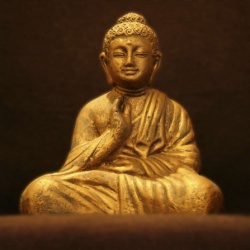Ngala Rig’dzin Dorje
Ngala Ri’dzin says:
"I remember the occasions on which all the photographs of me were taken. I also remember who took the photographs – but the person I recognise in them is, no doubt fortunately, beyond recall. He is as empty as the nature of memory itself. But the
emptiness which renders us unfashionable, myopic, sick, old and dead is the same emptiness which is essential to realisation. From which form arises; so whatever I am now is karmically indebted to the person in these old photographs. But the people themselves in these frames are no more likely to reappear than their quaint styles of spectacle frames."
"The bardo teachings of the Aro gTér are among a number of topics revealed in a ninefold format. When these bardos are introduced, the eighth in the series isgYo-wa bar rDo. gYo-wa bardo means ‘the bardo of the changing moment’ – the virtual
interval that is the dynamic dimensionless present moment. The ninefold format is also cyclical, typical of the way in which Vajrayana is presented in evolutions which reflect – with non-dual irony - our futile involutions of samsara."
"Both samsara and nirvana are endless. Duality and non-duality are both guaranteed to perpetuate themselves. If one invests in duality one perpetuates tenacious self-referencing. If one relinquishes the creation of duality one relaxes towards primal
naturalness. Vajrayana is ‘the Path of the Result’ – meaning that the completion of Vajrayana is inherent in the inception of its practise. One constantly aspires to realisation ‘in this mind and this body’, emphasising that the wherewithal one possesses at the beginning of the path are already none other than the vessel of the result."
"Whilst these photographs set out to portray change, they could at the same time suggest a conclusion which is not so distant from their origin. The nature of the starting point, the nature of every intermediate point or bardo is inherently not different from that which is being sought."
"In the Nying-thig tradition the Lama can make use of formalised instructions for pointing out the nature of Mind to the disciple. The Lama might ask ‘Is there anywhere to go? Is there anyone who is going?’ This establishes the point of view that
our own realisation has been attempting to discover itself since beginninglessness. The romantic mediæval image of ourselves on embattled ‘spiritual quests’ against diabolical opposition falls apart in this knowledge. Our neuroses can be self-liberated rather than demonised."
